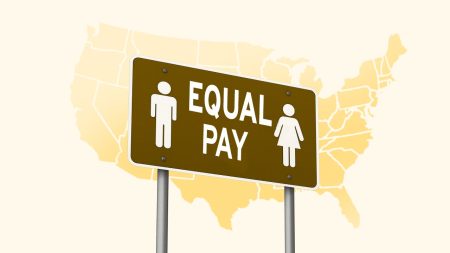More than 4 in 10 Americans belong to a credit union, but this type of financial institution is often an afterthought for many personal loan applicants.
But failing to consider credit unions as part of your shopping-around process could mean paying more. That’s because federal credit unions (more on the distinction later) cap unsecured personal loan interest rates at 18 percent. That may seem high, but not when compared to the 35.99 percent rate ceiling of many popular banks and online lenders. Plus, credit unions offer lower overall average rates than competitors.
Sure, credit unions have a barrier to entry (including membership, which we’ll get to), but if you’re in the market for a loan, consider browsing rates and terms with at least one credit union, perhaps one in your community. Here’s why.
| Product | Credit unions’ market share |
|---|---|
| Personal loans | 36% |
| Auto loans | 30% |
| Mortgages | 4% |
| Source: ACU (data as of February 2025) |
For the people, by the people
That could be a common refrain for card-carrying credit union members everywhere. After all, these nonprofit institutions are member-owned, and their boards of directors comprise volunteers.
Like banks and online lenders, credit unions must watch their bottom line — they don’t lend to just anyone. Still, you might find forgiving eligibility criteria if you’ve been a longtime member. Even if you’re a newcomer with less-than-stellar credit, you could find lower interest rates than what banks and online lenders advertise.
Did you know?
About 75 percent of credit union loans are lent to individual households, not commercial customers. Compare that to 50 percent for most community banks and 30 percent for large banks, according to trade organization America’s Credit Unions (ACU).
Competitive interest rates (and not only for great credit)
The Federal Credit Union Act establishes the ceiling on loan interest rates at 15 percent. And the National Credit Union Administration (NCUA), which is allowed to raise the cap for up to 18 months at a time, has set the current limit at 18 percent (through March 10, 2026).
That means that no federal credit union (FCU) can lend a personal loan at a rate above 18 percent, making FCUs an attractive option for consumers who would receive credit card-like interest rates (up to 35.99 percent) from banks or online lenders. Consider how costs change for a two-year loan for $11,607 (the average, according to TransUnion).
| Credit union: Loan 1 | Online lender: Loan 2 | |
|---|---|---|
| Maximum interest rate | 18% | 35.99% |
| Monthly payment | $579 | $685 |
| Total cost of repayment | $13,907 | $16,447 |
| According to Bankrate’s personal loan calculator |
What’s the difference between FCUs and federally insured credit unions?
Credit unions can be chartered (or made legal) federally or at the state level. Many state-chartered, federally insured credit unions (FISCUs) also cap their APRs near FCU levels, even though the cap isn’t mandated by law.
What if you have good credit?
Besides having a lower ceiling on APRs, credit unions also have a lower rate floor, in many circumstances. Consider that the average rate of credit union personal loans was 10.75 percent in the first quarter of 2025, versus an average rate of 12.03 percent at banks, according to the NCUA.
“The reason that credit unions are offering better rates to their members than other lenders is not because of the regulations that they face principally, but because of the way that they’re structured, that they’re not-for-profit, member-owned cooperatives,” says Curt Long, ACU’s deputy chief economist. “And so… the profits that banks would send to their shareholders, credit unions send back to their members in the form of better rates.”
Bankrate’s take:
Credit unions aren’t just a competitive option for personal loans. We spoke to six Bankrate employees who borrowed auto loans from credit unions. All six said their lender delivered the lowest interest rate they found.
| Product | Term (years) | Credit unions’ average interest rate | Banks’ average rate |
|---|---|---|---|
| Unsecured personal loan | 3 | 10.75% | 12.03% |
| Used car loan | 4 | 5.93% | 7.82% |
| New car loan | 4 | 5.74% | 7.43% |
| Source: NCUA |
Membership is easier than you might think
You’d be forgiven for assuming that credit union membership is too difficult to attain. After all, many institutions are named for the audience they intended to serve at their founding: four of the country’s five largest credit unions are Navy FCU, State Employees’ FCU, Pentagon FCU (or PenFed) and Boeing Employees CU.
But in actuality, joining many of the nation’s 4,600-plus credit unions isn’t a difficult task. That’s particularly true when applying for a personal loan, since CUs typically won’t require you to become a member until you submit your application or even after it’s approved.
| Many CUs make membership easy | A few CUs are more restrictive |
|---|---|
|
|
But… personal loan eligibility is less clear for non-members
However, credit unions that offer personal loans are often less transparent about their underwriting criteria. Compared to the average online lender, they generally publish less on their website and restrict what their customer service reps can relay over the phone (trust me, we’ve dialed).
For personal loan applicants wanting to know about a credit union’s minimum credit score, for example, it can take some legwork (or an application) to confirm your eligibility.
Long’s counterargument: Credit unions exist to serve their communities.
We do see evidence, in the data set that we have, that credit unions offer better rates to consumers across the credit spectrum.
— Curt Long, ACU’s deputy chief economist
Long adds, “But is that a realistic scenario… where that borrower with the credit score in the 500s could… still get access to a personal loan from them? You know, that’s going to be a credit-union-by-credit-union situation.”
Personal customer service that rates higher
Of course, not all credit unions are created equal, and like any financial institution, borrowing from a credit union has pros and cons. It didn’t take us long to find a credit union customer who complained about their (non-federal) CU’s “primitive-looking” online portal and hard-to-reach customer service.
I shopped around with credit unions [for an auto loan], but the process was more analog and therefore inconvenient. Applying for loans is way easier with big banks due to the sophistication of their digital tools.
— Bankrate insurance editor Jessa Claeys
However, credit unions offer in-person service that online lenders lack, and many members report high levels of satisfaction with the overall service of credit unions. Consider J.D. Power’s satisfaction surveys:
- The average satisfaction score for credit unions was 74 points higher than that of banks (2025).
- For consumer lending specifically, Navy FCU registered the second-highest satisfaction rating, 787, among a long list of mostly online lenders with an average rate of 702 (2024).
Bottom line
Like any financial choice, deciding between banks and credit unions is personal. One or the other might suit your needs best — but we’d argue that it’s wise to include credit unions when you shop around for loans. It’s possible, maybe even probable, that a personal loan from a credit union could save you hundreds or thousands of dollars in interest. When you’re ready to compare options, consider utilizing NCUA tools to find a credit union near you or research it.
Read the full article here









